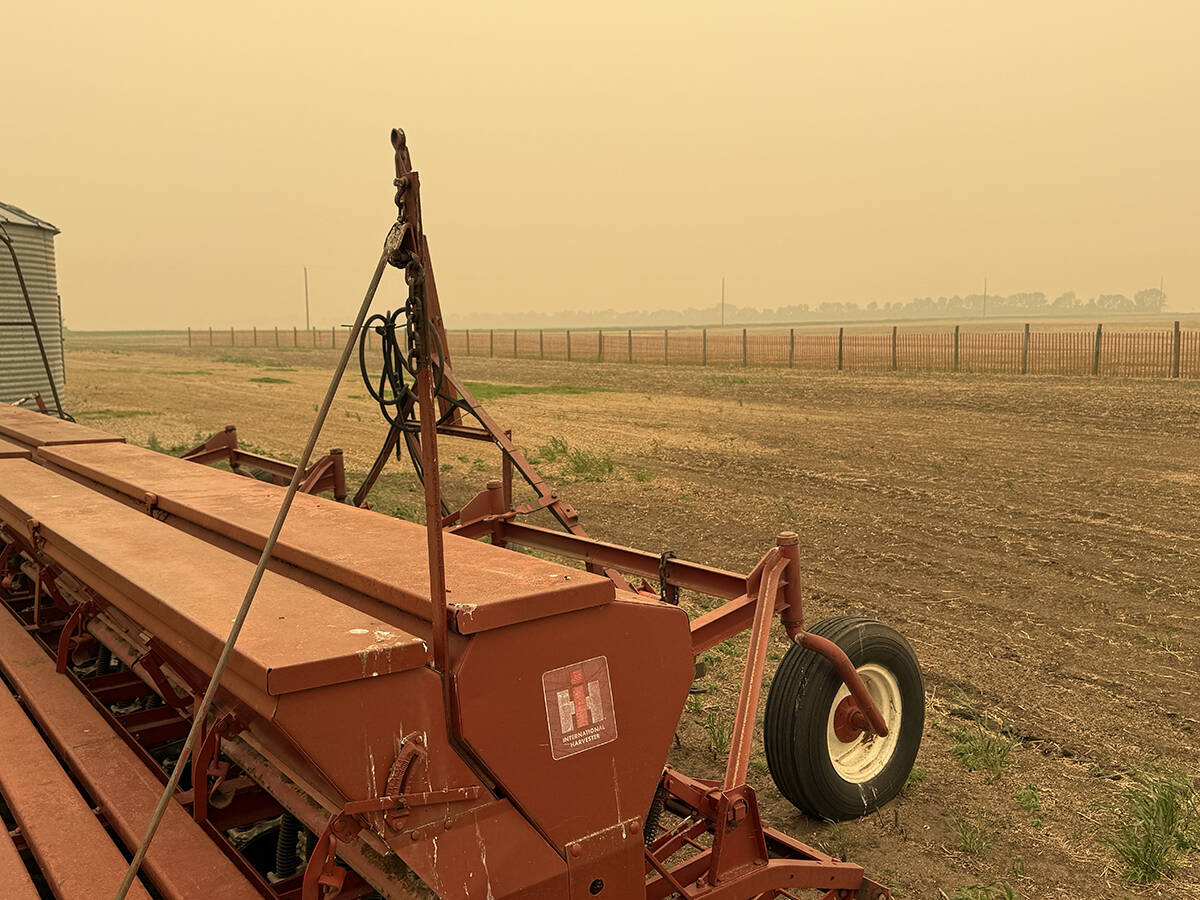Cattle producers can expect delays and truck shortages when it comes time to move their animals during the fall calf run, predict several livestock hauling companies.
Mark Wendorff with Primrose Livestock in Lethbridge estimates there are about one-third fewer trucks to pull the livestock trailers than were operating before the discovery of BSE in May 2003. The shortage could mean long delays moving cattle from farm to auction, auction to feedlot or feedlot to packer.
“They’re just not going to be able to find trucks to do it,” said Wendorff. His company had 27 trucks hauling cattle to the United States before BSE and now has only five.
Read Also

Wildfires have unexpected upside this year
One farmer feels smoke from nearby wildfires shrouded the July skies and protected his crop from the sun’s burning rays, resulting in more seeds per pod and more pods per plant.
The shortage of cattle trucks for the fall run is a real concern, said Roger Roberge, who operates the largest fleet of livestock trucks in North America.
Before BSE, his company, Roberge Transport, had 150 cattle transport units. Now it has 100 available to haul cattle.
“We will be very, very, very short this year,” said Roberge of Lloydminster.
While many of the trailers are still around, there are no trucks or drivers to pull them. In the cattle industry, a transport company usually owns the cattle trailers and organizes the cattle to haul. The company then leases or contracts a truck driver and his truck to pull the trailers.
With few cattle moving in the past 15 months, most lease operators took their trucks to where there was work.
Few drivers are willing to give up a steady job for one that might last two months of the fall calf run, said Roberge who estimated he will be about 40 operators short. With an extra 700,000 calves that may be coming to market this fall, he doesn’t see how he and other trucking companies will be able to service the large feedlots or order buyers who will need cattle moved this fall.
Before BSE, a little less than 40 percent of Roberge’s business was hauling cattle to the U.S.
Wendorff said his company spent the summer hauling potato chips trying to stay in business until the fall calf run. Before BSE, all 27 of its trucks hauled cattle exclusively to the U.S.
“We’re taking 25 years of everything we’ve ever built up in this business and it’s gone,” said Wendorff, who is back driving a truck after several years in the office.
“I think the whole trucking industry is on the verge of a disastrous breakdown.”
Ron Scarth with Merritt Livestock Equipment, a company that builds livestock trailers, said in addition to a shortage of lease operators to haul the trailers, there’s a shortage of drivers with livestock experience.
But Ryan Sorgard of Travelers Financial Group, the Calgary finance company that writes most of the finance agreements for Merritt, said most people have managed to keep their trucks and trailers during the crisis by shifting from livestock to hauling anything else.
“We’ve had a few casualties, but it’s not as bad as we first anticipated,” said Sorgard.
“We thought we would have a huge amount of repos.”
Blair Vold of Vold, Jones, Vold Auction in Ponoka, Alta., said he hasn’t seen a big shortage of trucks so far, but expects that will change by mid-October during the peak of the fall calf run.
“There hasn’t been a big problem yet, but I can foresee it coming,” said Vold.














